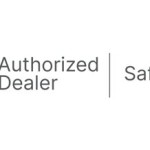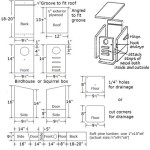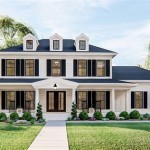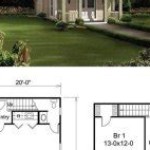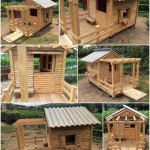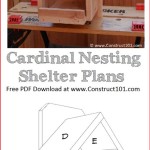Design Your Dream Home: House Plans For Two Families in PDF Format
The concept of multi-generational living or co-housing among close-knit families is experiencing a resurgence. This trend necessitates architectural solutions that accommodate the needs and preferences of multiple households under one roof, while maintaining a degree of privacy and independence for each family unit. House plans designed for two families are becoming increasingly sought after, and the availability of free, downloadable PDF versions provides a starting point for many aspiring homeowners. This article explores the crucial elements of designing such house plans, focusing on key considerations for functionality, privacy, and potential legal implications.
Designing a house for two families requires a significantly different approach than designing a single-family dwelling. It's not simply a matter of duplicating a standard floor plan. Instead, a comprehensive understanding of the specific needs and lifestyles of both families is essential. This includes considering factors such as the age range of family members, work habits, social lives, and any specific accessibility requirements. Early and frequent communication between all involved parties is crucial to ensure the final design meets everyone's expectations and minimizes potential conflicts.
The allure of free PDF house plans often lies in their accessibility and cost-effectiveness. However, it’s imperative to recognize the limitations of these plans. While they may provide a basic framework or inspiration, they rarely account for specific site conditions, local building codes, or the unique needs of the families involved. Modifying a pre-existing plan to fit these requirements often necessitates the involvement of an architect or experienced designer. Furthermore, the structural integrity and compliance with safety regulations of free plans should be thoroughly verified by a qualified professional before construction begins.
Key Considerations for Shared Spaces and Private Domains
One of the primary challenges in designing a house for two families is striking the right balance between shared spaces and private domains. Common areas, such as the kitchen, living room, and outdoor spaces, should be designed to foster interaction and create a sense of community. However, each family also needs dedicated private areas that offer personal space and autonomy. These private areas typically include bedrooms, bathrooms, and potentially a separate living area or study. The layout should strategically separate these private zones to minimize noise and visual intrusion.
The kitchen, often considered the heart of the home, requires careful consideration in a two-family dwelling. Depending on the lifestyle and cooking habits of both families, a shared kitchen might be feasible, but it would ideally be equipped with ample storage, multiple cooking stations, and efficient appliances to accommodate simultaneous use. Alternatively, two separate kitchens, even smaller ones, might be a more practical solution, particularly if the families have significantly different dietary needs or cooking schedules. The decision should be based on open communication and a realistic assessment of how the space will be utilized.
Living rooms should be designed with versatility in mind. A large, open-plan living room can serve as a central gathering space for both families, but the layout should also allow for smaller, more intimate seating areas. Incorporating features such as a fireplace, built-in bookshelves, or large windows can enhance the ambiance and create a more inviting atmosphere. Consideration should be given to noise levels; strategically placed furniture, area rugs, and sound-absorbing materials can help mitigate noise transmission between different areas of the house.
Outdoor spaces, such as patios, decks, and gardens, offer opportunities for relaxation and recreation. These spaces can be designed for shared use or divided into separate areas for each family. A shared garden can be a rewarding experience, fostering collaboration and a sense of shared responsibility. However, clear guidelines regarding maintenance and usage should be established to avoid potential conflicts. Alternatively, separate patios or decks can provide each family with their own private outdoor retreat.
Ensuring Privacy and Independence
Beyond the physical separation of spaces, several design strategies can enhance privacy and independence in a two-family house. Soundproofing is a critical consideration, particularly between bedrooms and living areas. Utilizing insulation with high sound transmission class (STC) ratings can significantly reduce noise transmission. Solid-core doors and double-paned windows can further improve sound insulation. Strategic placement of closets and storage areas along shared walls can also act as a buffer against noise.
Separate entrances are highly desirable in a two-family house, as they provide each family with a sense of autonomy and control over their comings and goings. This is particularly important if the families have different work schedules or social lives. Separate entrances can also simplify mail delivery and package handling. If separate entrances are not feasible due to site constraints or budget limitations, a shared entrance can be designed in a way that provides each family with a designated entry area and storage space.
Utility systems, such as heating, cooling, and plumbing, can be designed for shared use or separated for each family. Shared systems are typically more cost-effective to install and maintain, but they also require careful coordination and communication regarding usage and maintenance. Separate systems provide each family with greater control over their energy consumption and comfort levels, but they also increase the initial investment and ongoing operating costs. The decision should be based on a careful analysis of the long-term costs and benefits.
Thoughtful landscaping can also contribute to privacy and independence. Strategically placed trees, shrubs, and fences can create visual barriers between different areas of the property, providing each family with a greater sense of seclusion. Designing separate outdoor living spaces, such as patios or decks, can further enhance privacy and provide each family with their own outdoor retreat.
Navigating Legal and Regulatory Considerations
Before embarking on the design and construction of a two-family house, it is essential to thoroughly research and understand the applicable local building codes and zoning regulations. Many municipalities have specific requirements for multi-family dwellings, including minimum lot sizes, setbacks, parking requirements, and fire safety standards. Failure to comply with these regulations can result in costly delays and penalties.
Zoning regulations may restrict the number of dwelling units allowed on a particular property. In some areas, a two-family house may be permitted as a duplex, while in others it may require a special use permit or variance. It is crucial to consult with the local planning department to determine the specific zoning requirements for the property and to obtain the necessary permits and approvals before construction begins.
Legal agreements should be established to clearly define the rights and responsibilities of each family with regard to the property. This agreement, often referred to as a co-ownership agreement or a tenancy-in-common agreement, should address issues such as ownership percentages, maintenance responsibilities, payment of taxes and insurance, dispute resolution mechanisms, and procedures for selling or transferring ownership interests. Consulting with a real estate attorney is highly recommended to ensure that the agreement is legally sound and protects the interests of all parties involved.
Financing options for a two-family house may differ from those available for a single-family dwelling. Lenders may require a larger down payment or a higher interest rate for a multi-family property. It is important to shop around and compare offers from different lenders to find the best financing option. Furthermore, obtaining appropriate insurance coverage is crucial to protect the property against potential risks, such as fire, theft, and liability.
The availability of free PDF house plans for two families can be a valuable resource for generating initial ideas and exploring different design possibilities. However, it is crucial to recognize the limitations of these plans and to engage with qualified professionals, such as architects, designers, and contractors, to ensure that the final design meets the specific needs and preferences of both families, complies with local building codes and zoning regulations, and is structurally sound and safe.

Free Simple Two Story House Plans Online Edit Available

House Plan 5302 Park Place Multi Family

Free Home Plan American Design Concepts

6 Unit Modern Multi Family Home Plan With 900 Sq Ft Units 21603dr Architectural Designs House Plans

Free Simple Two Story House Plans Online Edit Available

Free Simple Two Story House Plans Online Edit Available

Multi Family Plan 7855

Six Plex Multi Family House Plan 90153pd Architectural Designs Plans

40x60 House Plan Two Story Building 2400 Sq Ft Designs And Plans Pdf Books

3 Bedroom House Plan With Finished Building Pictures Free Aqila Media
Related Posts

